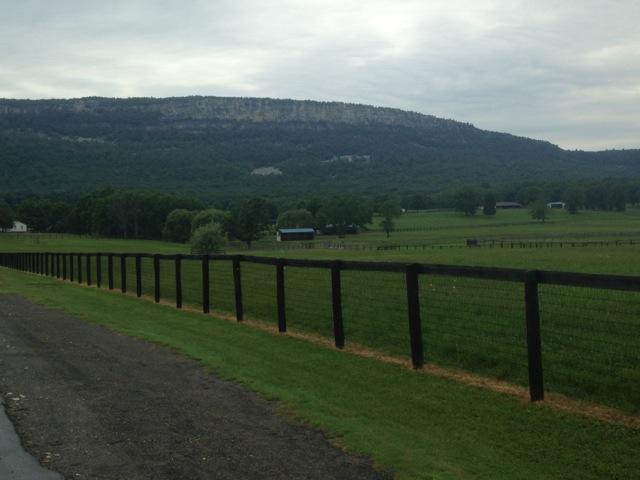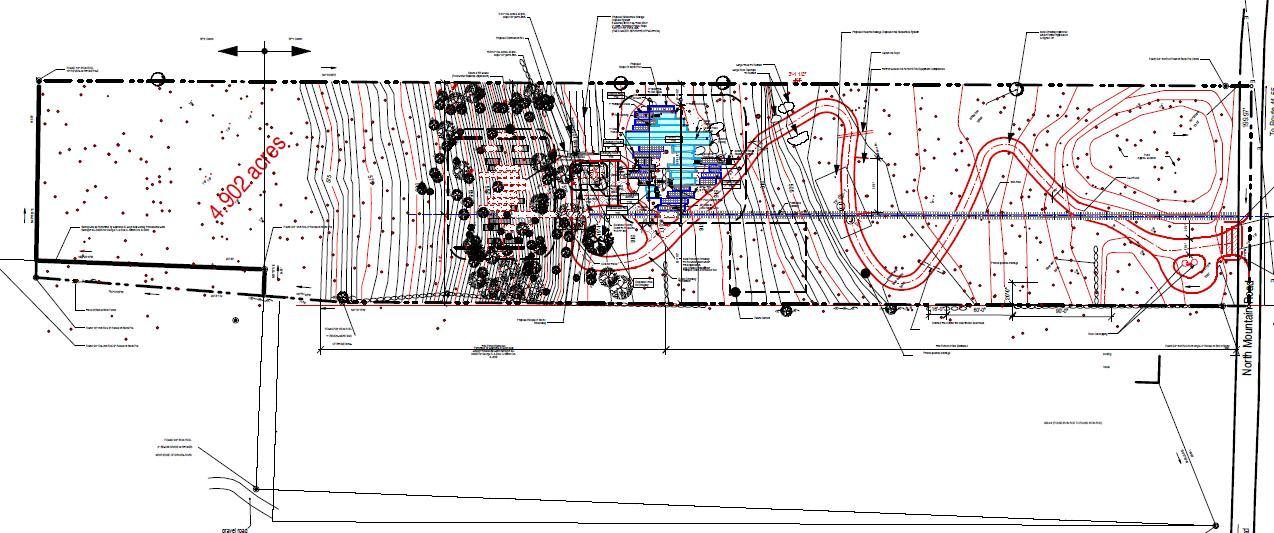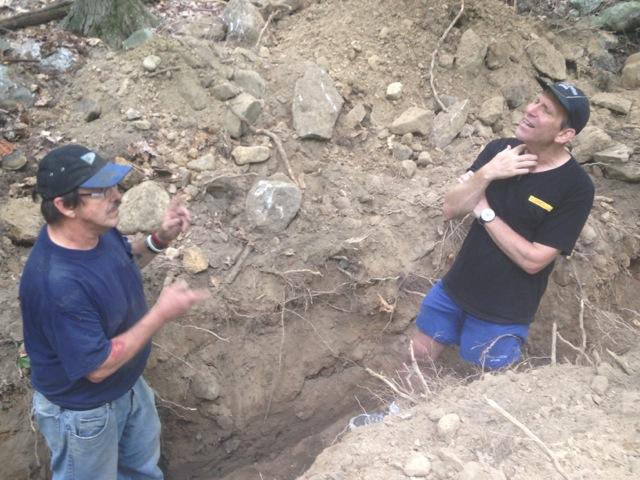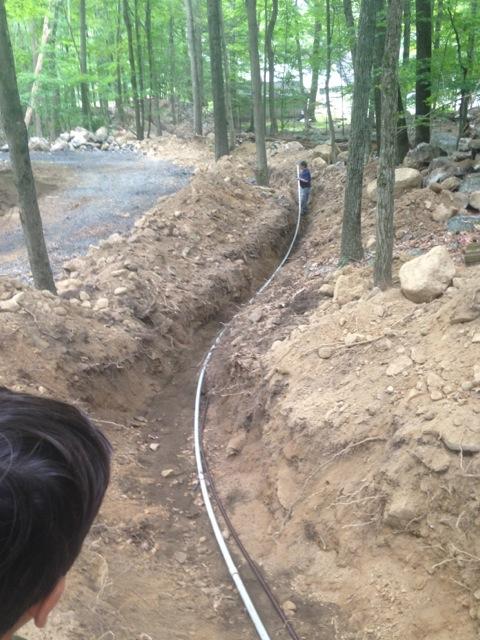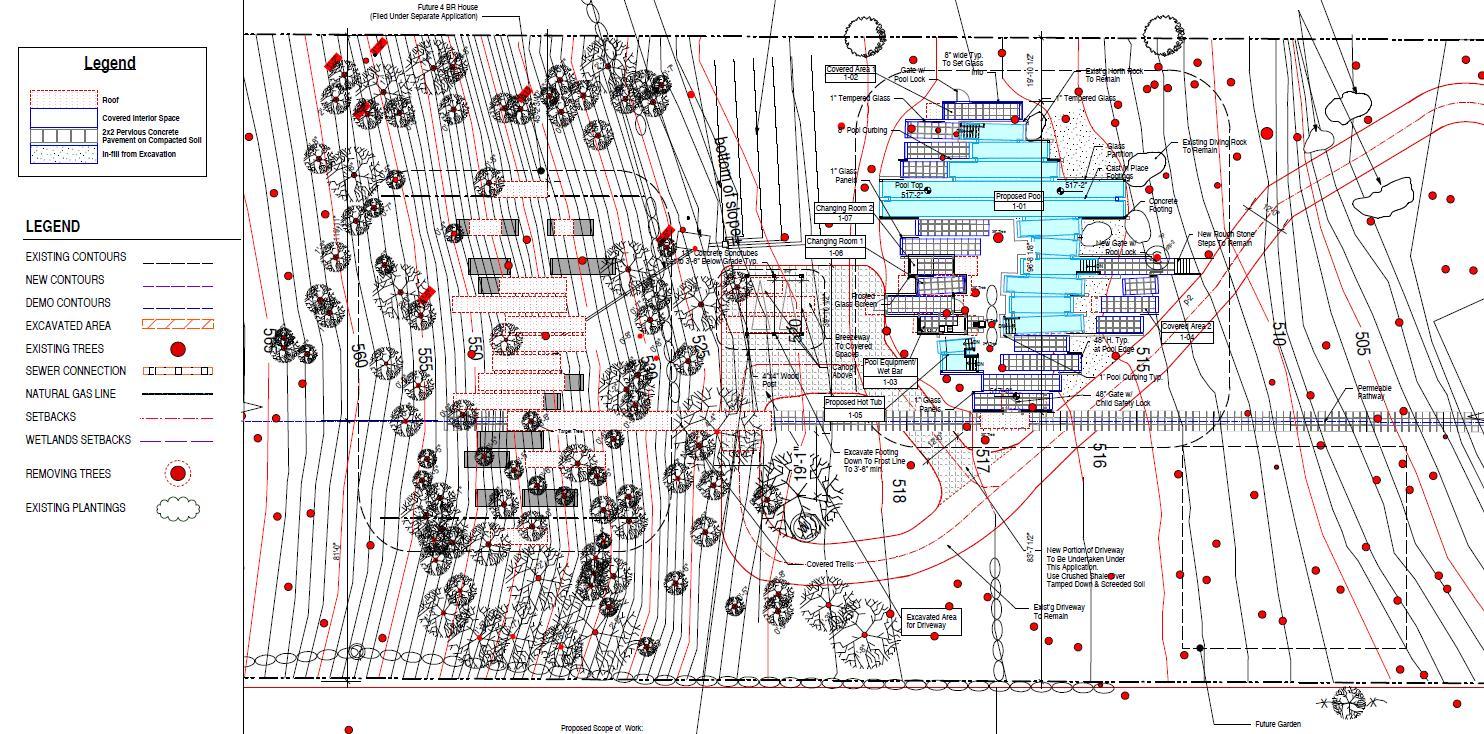First Entirely 3D Printed Estate is Coming to NY, Including a 3D Printed 2400 Sqft House, Pool & More
New York City architect/contractor Adam Kushner begins construction of the first ever 3D printed estate, which features a 3D printed swimming pool, 4-bedroom, 2400 square foot home, and more. The 3D printer which will be a modified version of Enrico Dini’s D-shape printer, will, if all goes as planned, eventually be able to automatically place rebar within the 3D printed house, as it prints.
We have covered a lot of news concerning the 3D printing of houses, over the course of the last year or so. Whether it was the 3D printed castle that Andrey Rudenko has constructed in Minnesota, the 3D printed salt house that Emerging Objects has built, or one of the many other projects that have been taking place around the globe, the technology is only making small waves among the construction industry.
None of these projects come close to that, which well known New York City Architect and Contractor Adam Kushner, and partners James Wolff, and Enrico Dini have planned and already have begun to undertake in Gardiner, New York. Kushner, who runs KUSHNER Studios and In House Group in New York City, has over 25 years of experience in the construction industry. His company has designed and constructed buildings in Manhattan as large as 80,000 square feet in size, and he, as well as his company, has been featured on shows such as Fox News, BBC Home, and Celebrity House Hunting.
“About a year and a half ago, I started to become immersed in 3D printing,” Adam Kushner told 3DPrint.com. “I said, ‘OK, who’s doing this on the construction level?’ That is where I see the future. I don’t care about the toys or the games or the little things people are doing on their desktops. What I really saw, was the bigger potential for 3D printers in the construction industry. That is a trillion dollar business, and it changes the paradigm of how we build.”

Enrico Dini’s 3D printed miniature house (image source: d-shape)
Kushner found a man named Enrico Dini, who is quite well known in his own right, for the invention of his extremely large 3D printer, capable of printing out large structures and buildings. Dini owns and operates a company called D-Shape, as well as a patent for a magnesium-based binding process that the 3D printer uses. The process combines sand or other materials with a magnesium-based binder to create stone-like objects.
Kushner told Dini that he wanted to bring his 3D printers, and the process in which they print with, to America, in hopes of using them for a few truly unique construction projects. Dini informed Kushner that he had been talking with a man named James Wolff about opening a potential business for D-Shape in America. Kushner contacted Wolff, the two hit it off, and to make a long story short, they decided to create D-Shape Enterprises New York. Wolff, is the co-founder of Deep Space Industries, which won two major NASA contracts for the asteroid mission and now has an office at Ames.
Just this past June, Kushner flew over to Italy to meet with Dini. The two agreed to ship one of these large 3D printers back to New York, and it is scheduled to arrive in January of 2015. From there, Kushner, Wolff and their team of workers plan to begin 3D printing what will undoubtedly be the single most amazing 3D printing project ever undertaken. Surprisingly, Kushner has no doubts that he will successfully accomplish it.
“There are people who design. There are people that build. There are people that design and build,” said Kushner. “Rarely do the two come together. And although Design-Build firms certainly exist, we have the rare niche in that we are designers who are very good at building, as opposed to contractors that happen to have an architect on staff.” This is where Kushner believes he has an advantage over all of the other projects that have been attempted, and to varying degrees, succeeded or failed.
The massive project that KUSHNER Studios will be undertaking, is for the 3D printing of an entire estate in Gardiner, New York. It will feature an in-ground swimming pool, a pool house, and a 2400 square foot, 4 bedroom home. If accomplished, like Kushner undoubtedly believes, it will go down in history as perhaps the most innovative project that brought 3D printing into mainstream construction – which if successful it undoubtedly will do.
“It could be ego driven, it could be legacy driven, but if I am going to leave the world anything, I’m hoping that perhaps this might be my little niche,” Kushner told us.
Surely one would wonder, how in the world a project this large, and this unique would be permitted for building in New York, with the lack of history that 3D printing has in the construction industry. Surprisingly, it has already been permitted, and it was actually a relatively simple process. “There was a form I had to fill out, and it asked for ‘method of construction’,” explained Kushner.
On the application, there were 3 options; wood, steel, and masonry. Kushner created his own forth option called “3D Printed”, and checked it. He sent it into the city department of buildings, and he was granted a permit. When the inspector came out to see the site and the site plans, he didn’t bat an eye.
Construction on the site has begun, with power being dropped in last week, and the electricity on the site should be live within a week or so, as of when this article was published. Once they receive the 3D printer from Dini, they plan to begin printing the in-ground swimming pool, which will be the easier task of what Kushner sees as a 3 stage process. Stage 1 will be the pool, stage 2 – the pool house, and stage 3 – the 2400 square foot house. While using Dini’s 3D printer, he plans to modify and “tinker with it” to increase its efficiency and printing ability, so that by the time they are ready to print the full-size house, it will be a completely overhauled 3D printer, capable of doing some quite amazing things.
When Kushner went to visit Dini in Italy, he was shown the very first machine that the inventor had come up with, about 11 years ago. It is actually still in use today. “It was like looking at Thomas Edison’s wax cylinder (phonograph),” Kushner told us. “Then I went back to Pisa, and I saw what he is working on now, and for me this was like looking at a Victrola (phonograph). ” Kushner continued his analogy by saying, “I know that what he is going to be sending us, is going to be more like a high fidelity stereo of the 1960’s. It will work, it will do the job, but there is a long way to go to bring it into the iPod era. I’m hoping that I’m going to get this high fidelity stereo version, and we are going to work on it. I’m hoping to get it to the iPod version in about a year to a year and a half.”
Starting on the swimming pool in late February or early March will give Kushner and the rest of his team the ability to make the needed tweaks and changes while undertaking a project that has already been proven to work with Dini’s 3D printer. “A pool is in complete compression,” explained Kushner. “Water on the inside, soil on the outside. One of the most successful uses of the D-Shape technology has been in the creation of artificial reefs.”
The material used for printing, will all be locally sourced. Kushner plans on taking local rock from his building site, crushing it up and then combining a bonding agent to make the material needed for the 3D printing process. As they are 3D printing the pool, Kushner fully expects that he will be modifying the 3D printer to improve upon it. Then, they will move onto stage 2 – 3D printing the fully enclosed pool house sometime next summer. The pool house will feature some additional challenges, including a roof that will be 3D printed, as well as additional tensile forces on the structure.
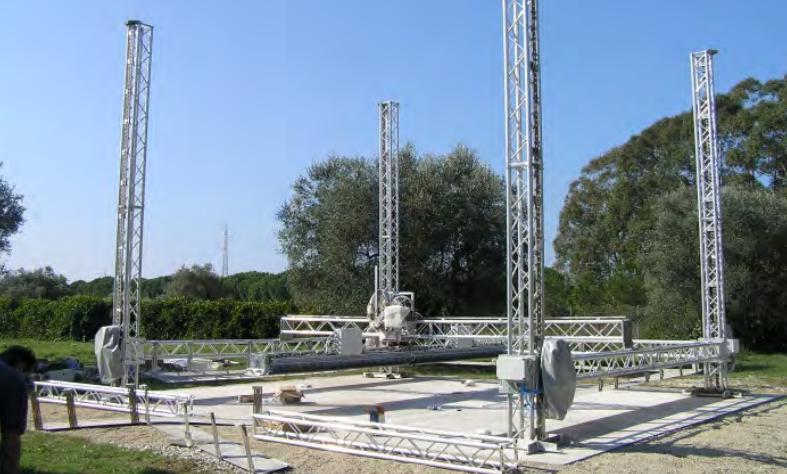
One of Enrico Dini’s large 3D printers, similar to the one that Kushner will be using and modifying. (image source: d-shape)
To overcome some of these issues, Kushner has several ideas which he plans to potentially use. They include the possibility of adding fiber, aluminum strands, or even Brillo pad-like steel shavings into the concrete mixture in order to add tensile strength to the printed structure.
Stage 3 – the 3D printing of the 2400 square foot house, which Kushner hopes to start in about 14 months from now, will be the most challenging. He sees this stage as where most of the major breakthroughs in the 3D printing technology will take place. Up until now, with previous ‘3D printed house’ projects, we have only seen very small houses actually 3D printed, or in some cases, small sections which have been assembled together. Kushner plans on blowing away all of these projects by completely 3D printing a full-size home. To do so, he plans on using ideas that have only previously been dreamt of, or in some cases unimagined altogether.
“My main focus is trying to figure out a way to get rebar installed into the mix as it is being poured (printed),” Kushner told us. This is where he feels the technology will really turn heads, and make people realize that this is the future of construction. “So what would it take to have an extruding reel that shoots through this continuous rod (of rebar), and cuts it at whatever moment (desired)? Not too much,” he continued. “Technology is here now. There are machines that are automated to bend rebar. I think that’s what I bring to the picture, in that there aren’t too many architects and contractors who have worked in this medium, who understand concrete, rebar, and how to cut and bend it, and that field winnows down quite a bit when you throw in the number people who have worked in 3D technologies.”
If you look at the building plans included in this article, you will see that everything is constructed in slices. “I’ve taken the dimensions of the machine at the moment, which is 5m x 5m x 5m,” said Kushner. “I’m breaking [the construction] down into container sized units, so nothing is going to be larger at this moment than 10 meters by 5 meters, and that becomes the basic building block for all of these 3D printed pieces.”
Kushner and D-Shape are currently working on the STL files for the development of the estate; the same type of file used for desktop 3D printers. In fact, they plan on printing a small scaled version on a desktop 3D printer at some point, hopefully in the next week or so, prior to beginning the large full-scale version on-site.
As for costs of construction, that is yet to be seen, but Kushner expects that it will be far less than traditional construction methods, due to the fact that 45% of normal construction costs are usually attributed to labor. With 3D printing, labor costs are virtually ‘0’, besides the individual(s) needed to operate the 3D printer.
Kushner, 51 years old, sees the project as a 2-year endeavor; one which he is taking very seriously. “This is serious for me. I don’t play games any more. Time is shorter, and this is something that I’d like to do with my days. If successful Kushner, Wolff, Dini, D-Shape, and team will go down in history as the first to use 3D printing on a massive scale within the construction industry. It may very well change the paradigm within the construction industry.
You can view the architecture plans provided to 3DPrint.com by Kushner here. What do you think about these incredible plans by Adam Kushner, and D-shape Enterprises New York? Will he succeed? What does it mean for the future of construction? Discuss in the 3D Printed Estate forum thread on 3DPB.com.
Subscribe to Our Email Newsletter
Stay up-to-date on all the latest news from the 3D printing industry and receive information and offers from third party vendors.
You May Also Like
Precision at the Microscale: UK Researchers Advance Medical Devices with BMF’s 3D Printing Tech
University of Nottingham researchers are using Boston Micro Fabrication‘s (BMF) 3D printing technology to develop medical devices that improve compatibility with human tissue. Funded by a UK grant, this project...
3D Printing Webinar and Event Roundup: April 21, 2024
It’s another busy week of webinars and events, starting with Hannover Messe in Germany and continuing with Metalcasting Congress, Chinaplas, TechBlick’s Innovation Festival, and more. Stratasys continues its advanced training...
3D Printing Webinar and Event Roundup: March 17, 2024
It’s another busy week of webinars and events, including SALMED 2024 and AM Forum in Berlin. Stratasys continues its in-person training and is offering two webinars, ASTM is holding a...
3D Printed Micro Antenna is 15% Smaller and 6X Lighter
Horizon Microtechnologies has achieved success in creating a high-frequency D-Band horn antenna through micro 3D printing. However, this achievement did not rely solely on 3D printing; it involved a combination...


